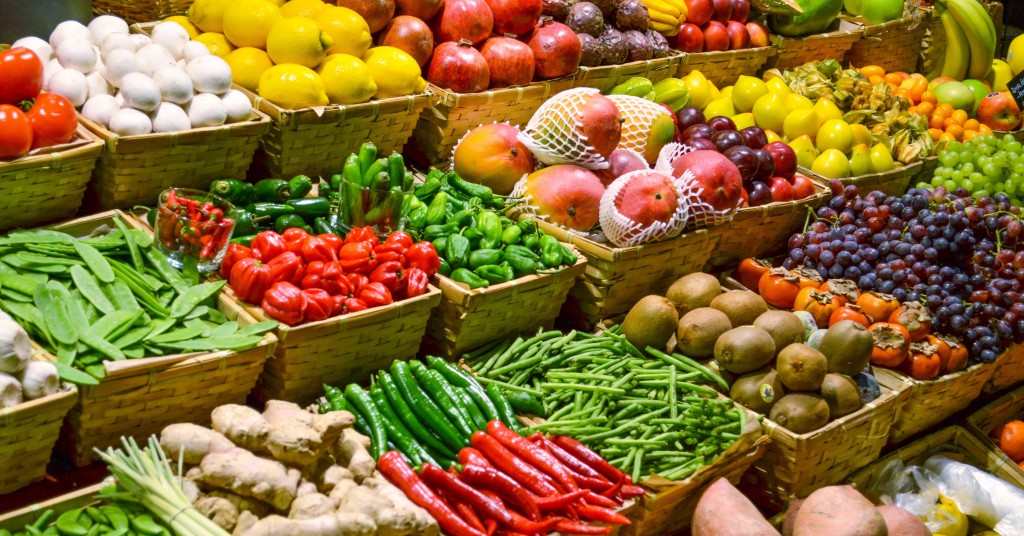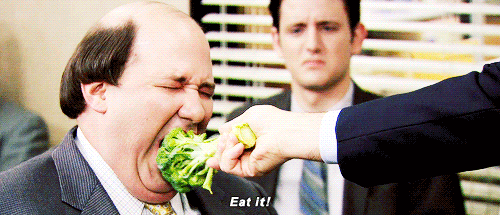If a product did the opposite of what it promised, would you still buy it? Probably not. So why can the diet industry get away with it?
The short answer is: marketing. Mainstream and social media push unattainable beauty standards on everyone, while all the diet foods, pills, workout equipment and DVDs claim that they’ll make you look like a supermodel. It’s a poisonous combination that fuels and exploits our insecurities in order to maintain a profitable cycle of dieting and weight gain.

Photo courtesy of thismodeleatsalot.com
And while the average person is trying to get thinner, these companies’ returns are getting fatter. The diet industry makes over $60 billion a year, and with an estimated 45 million Americans dieting each year, there’s plenty to capitalize on.
These diet plans set you up for failure by forcing you to rely on willpower to eat less, instead of establishing healthy habits. Most sugar-free and fat-free diet foods are stuffed to the brim with artificial sugars and chemicals that are linked to metabolic issues. And, in reality, a diet that restricts a whole food group is cutting out at least some of the good stuff. A low-carb (read: paleo) diet cuts out the energy you get from complex carbs like brown rice and sweet potatoes. A fat-free diet cuts out the heart benefits of omega-3 fatty acids found in foods like salmon and chia seeds. It’s important to eat a well-rounded diet of primarily whole foods so you’re not missing out on anything. Simply put, it’s all about balance.
Marketing that shows temporary weight loss incentivizes people to stay on these unhealthy diets. This allows diet companies to continue pushing the cycle of self-loathing and so-called “health foods” sold at inflated prices.
But, these companies aren’t dumb. When the general population started to understand that “diet” items aren’t necessarily healthy, advertisers started marketing items as “healthy” and “natural” to match consumer preferences. Sadly, these terms mean virtually nothing. Did you know that the FDA doesn’t have a strict definition of what can be labeled “natural,” just lenient suggestions? So your “natural” foods might still contain chemicals like pesticides.

GIF courtesy of giphy.com
It’s an uphill battle. But the good news? More and more Americans are trying to eat healthily, but not forcing themselves to follow a prescribed or preconceived diet. The Federal Trade Commission has also gone after several weight-loss companies for false advertising. And there is increasingly more social media relaying the body positivity movement, which combats unattainable beauty standards.
This seems like a never-ending struggle. The issue is that most diets temporarily fix symptoms, but not the real problem. Harsh calorie restriction and relying on fat-free foods will not pave the path to a healthy lifestyle. Here are some better tips:
1. Shift your focus

Photo courtesy of youtube.com
No, I don’t mean distracting yourself when you feel like eating. I mean shift your focus from how you look to how you feel. Start noticing how your body reacts to what you eat. Find out which foods make you feel sluggish and tired, and which ones make you feel energized and invigorated. Smaller doesn’t equal healthier, so spend your energy on finding recipes you love instead of trying to squeeze into a smaller size.
2. Use common sense

Photo courtesy of 112.international.com
Practice intuitive eating. You’re not smarter than your biology—if your stomach is grumbling, your body is telling you that it’s hungry. Don’t ignore it as an act of self-control; nourish it with the right foods. Try to eat lots of fruits, veggies and other whole foods that will fill you up and deliver all the necessary nutrients your body needs to thrive. If you’re eating actually healthy foods, a healthy body will follow.
Even though it sounds cliché, it’s important to eat the rainbow! Getting a broad variety of fruits and veggies will make sure you get enough healthy fats, vitamins, minerals and other nutrients. If you need to amp up your iron levels, try dark leafy greens; if you need an antioxidant boost, go for a handful of raspberries and blackberries; if you want to reduce inflammation and protect your heart, eat an avocado—you get the picture. But, in general, you’re doing good if you’re eating a variety of fruits and vegetables, foods that don’t need an ingredients list.
3. Pay attention

Photo courtesy of iflscience.com
Read labels. Start paying more attention to ingredients lists than the “natural” or “healthy” labels on foods. Generally, a shorter ingredients list with words you recognize is going to be better for you. Make your own judgments about both normal and “diet” foods, instead of letting advertisers make them for you. This means not just picking up a Lean Cuisine or a bottle of salad dressing because it says “All Natural” or “Low Fat” in bold print on the front—look past the marketing ploys.
Ultimately, the best thing you can do is focus on what you and your body need, and not what marketers, food companies or social media tell you that you need. The less you rely on preconceived “diet” plans and products, the more successful you will be. And hey, if Kevin Malone can do it, you can too.

GIF courtesy of tumblr.com


